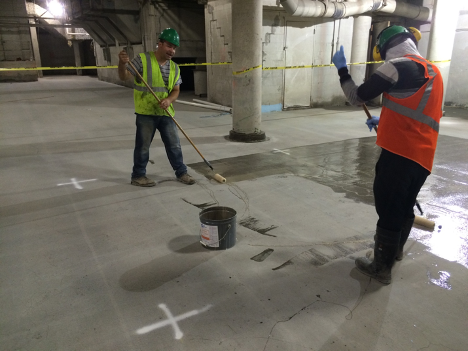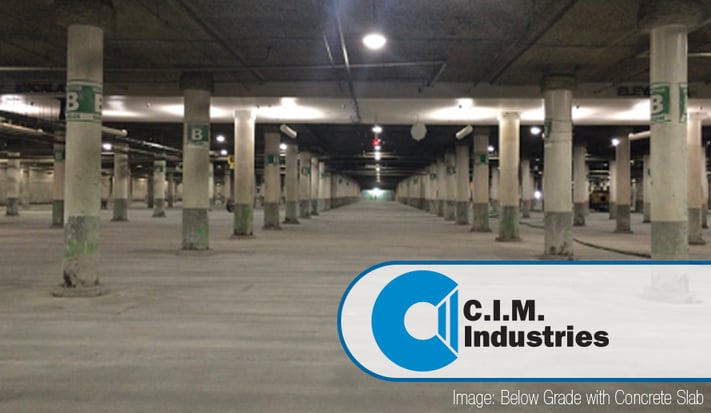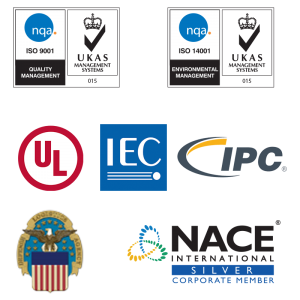Cold, fluid-applied waterproofing membranes are popular choices in the construction and building industries because of their versatility in areas where traditional sheet waterproofing or hot-applied membranes are not options. Cold, fluid-applied waterproofing membranes can be applied to both vertical and horizontal surfaces and, when installed correctly, should last for many years. Understanding and following the installation guidelines will help ensure the application's success. Cold, fluid-applied waterproofing membranes’ robust physical properties and long-lasting performance are why manufacturers publish application and installation guidelines that must be followed.
These guidelines include a brief description of the product's intended use, accessory materials, and safe practices such as adequate ventilation and personal protection equipment. Following are additional critical elements to the installation of a cold, fluid-applied waterproofing system:
- surface preparation
- integrity of substrate
- environmental conditions

Image- Preparing a concrete slab floor for waterproofing application
-
Surface Preparation
Surface preparation is the most crucial factor in determining whether application success will be achieved. The manufacturer’s guidelines include instructions for cleaning the substrate to ensure it is free of dirt, debris, and other surface contaminants. Guidelines also describe procedures for achieving the correct surface profile. The International Concrete Repair Institute offers concrete surface profiling chips for verification of the concrete surface profile. Both NACE International and the Society for Protective Coatings (SSCP) suggest standards for surface preparation of steel and other metals. Other substrate materials, such as wood and asphalt, have similar guidelines for proper surface preparation.
Manufacturers provide information on when to use accessory products, such as bonding agents and primers when preparing the substrate for application of waterproofing membranes. One such example advises that concrete be fully cured and dry prior to the application while other manufactures may recommend a moisture-tolerant primer on substrates that are not dry. A second example is conducting an adhesion test to verify that the waterproofing material has bonded to the substrate. Follow these and other methods suggested by the manufacturer to ensure that you are using proven techniques.
Related article: 3 Tips for a Final Walk-Through Inspection
-
Integrity of Substrate
Project specifications often provide information on patching and repairing loose, fractured concrete with cementitious grouts, mortars, and other similar materials. Additionally, the waterproofing system's manufacturer may propose recommendations for repairs of bug holes, honeycombing, concrete cracks, and sharp edges in the concrete substrate before the waterproofing system is applied. Some fluid-applied waterproofing materials are stiffer than others, making them prone to cracking. Alternatively, urethanes and other flexible membranes offer excellent crack-bridging capabilities. The integrity of the substrate will impact the performance of the waterproofing system.
YouTube CIM Industries Channel: Crack Bridging CIM 1000 Product Demonstration
-
Environmental Conditions
When installing cold, fluid-applied waterproofing products, an awareness of environmental conditions is essential in determining the application's outcome. Weather plays a significant role in the outcome of a successful waterproofing application. Fluid-applied waterproofing products should not be installed if rain or precipitation is imminent. Some manufacturers recommend applying the coating away from direct sunlight, while others might suggest that their product be applied in a declining temperature mode. Most fluid-applied waterproofing products are installed outdoors in applications such as rooftops, fountains, planters, below-grade foundations, lagoons, secondary containment basins, and plaza/decking systems, so weather conditions is a critical consideration.
Variables such as air temperature, substrate temperatures, relative humidity, and dew point, must be monitored and documented. Further information about application temperatures can be found are on manufacturers’ product data sheets and installation guidelines. Monitoring relative humidity and dew point during an application helps avoid complications that could impede the bond between the coating and substrate, affect the physical properties, and alter the curing of the product.
Follow the Guidelines to Achieve Success
Manufacturer's guidelines for fluid-applied waterproofing products are not intended as optional recommendations. They are proven methods for successfully applying the waterproofing system. Failure to follow manufacturers’ recommendations can cost time and money; a misstep in the application process can amount to more work, possible water damage, and significant added expense for removal and replacement. Incorporating daily field logs to document the application process helps keep the applicator on the right track.
Related blog: Documenting Your Coating Application Is Important!
Conclusion
As waterproofing products become more advanced, they also become more versatile. Although Manufacturers share many similarities in how products are used but their guidelines for application may be different. Following the manufacturer's guidelines ensures that the contractor is not omitting any steps. Incorrect application methodology, poor surface preparation, lack of understanding of the effects of unfavorable environmental conditions are just a few items that make a difference between a properly waterproofed area and one that leaks.
Contact us for more information.






